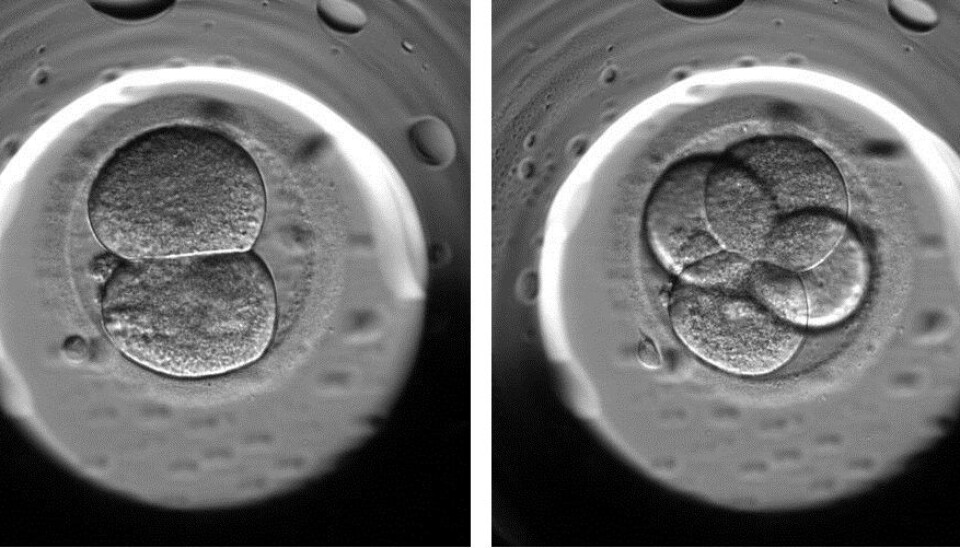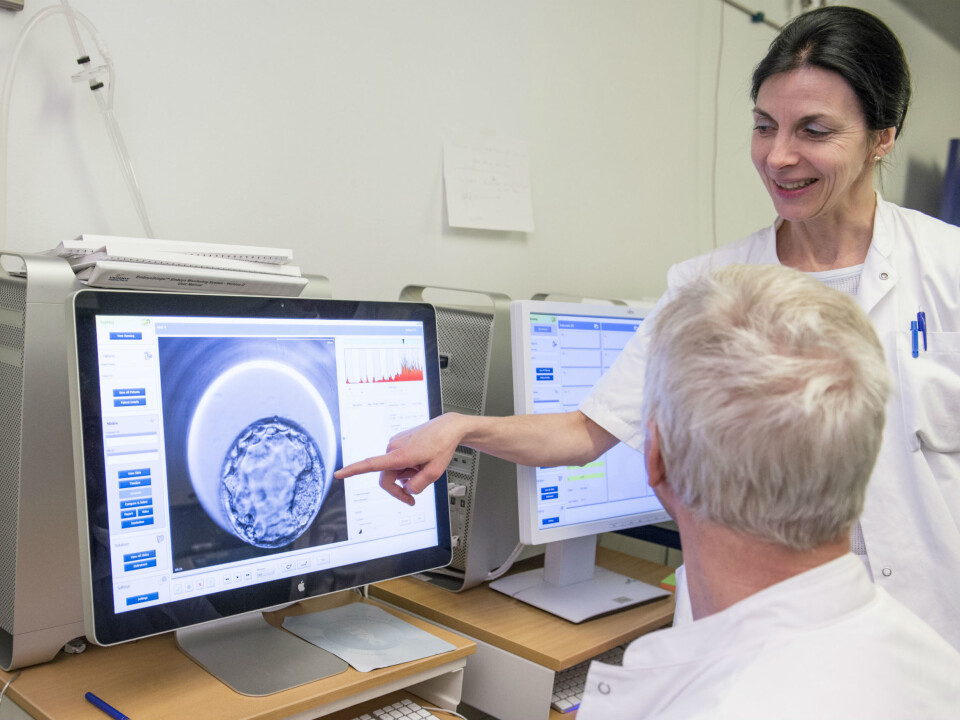
Time-lapse incubator identifies healthiest eggs
New video monitoring technology allows doctors to monitor artificially fertilised eggs before they are inserted into the uterus. The technology has been used successfully abroad and can help doctors identify the best eggs for incubation.
---------------------------
Danish children who are born with the help of artificial insemination are monitored in the very earliest phases of their lives.
This is thanks to a new incubator, which is equipped with cameras that monitor fertilised eggs in the days before they are inserted into the woman’s uterus.
The new technology is expected to make it easier for doctors to select the eggs that give the woman the best chance of becoming pregnant.

In the past few years the Danish incubator has been used in hospitals and fertility clinics in many parts of the world.
“We’ve got 335 instruments running in 37 different countries, and most Danish fertility clinics are also using our equipment,” says Niels Ramsing, the CSO of FertiliTech, the company behind the new incubator.
He adds that around 80,000 fertility treatments have been carried out worldwide using the new technology.
Less stress for the eggs
When a woman is inseminated artificially, she initially receives hormone treatment to boost her egg production. The eggs are retrieved from the woman and fertilised with sperm, after which the eggs spend their first days in the incubator.
Up to now, when doctors select which eggs to insert into the woman’s uterus, they have assessed the quality of the eggs by picking them out of the incubator and examining them under a microscope, explains Kirstine Kirkegaard, MD, of the Department of Clinical Medicine – Obstetrics and Gynaecolo-gy – at Aarhus University, who uses the new incubator in her fertility treatment research.
”Until now, the eggs have been taken out of the incubator once a day and put under a microscope. The problem with this method is, firstly, that it only provides a snapshot of the eggs’ development, and, secondly, moving the eggs around like this stresses them. That is obviously something we want to avoid,” she says.
With the new incubator there is no need to move the eggs around, as the system has built-in cameras which take photos of the eggs every 10 or 20 minutes, enabling doctors to monitor how the eggs develop and divide.
Bad eggs filtered out
One of the fertility clinics that use the new incubator is the Danish Fertility Clinic in Copenhagen. Here, doctors use the monitoring of the eggs to determine if some eggs behave abnormally and thus need to be filtered out, explains the clinic’s medical director Ursula Bentin-Ley, who specialises in gynaecology and obstetrics.
”With this new incubator, we’re getting much more information about each individual egg,” she says.
“Now suddenly we can find out if an egg behaves in a strange way and e.g. divides directly from one cell into four cells. In such cases we know that there is a very low probability that the egg will lead to a pregnancy or a baby. We can then use this information to discard eggs that are of inadequate quality to insert into the woman’s uterus.”
Parents watch videos of their baby as an egg
The new technology also enables parents to see video recordings of the very earliest stages of what may develop into their child.
“We have recordings of the eggs that end up in the woman’s uterus, and can then show the parents on a tablet computer how the eggs divided and how they look, and that’s usually something that expectant parents enjoy,” says Bentin-Ley.
Great hype around the technology abroad
Both in Denmark and abroad there is great interest in using the technology as a research tool:
”One of the advantages is that the development of the eggs is documented digitally. Instead of just looking through an old-fashioned microscope, all the images of the eggs’ development are now stored on a hard drive. This provides us with lots of data that can be used for analysis and research,” says Ramsing.
“We have just come back from a meeting at the American Society of Reproductive Medicine, where scientists presented 44 cases in which our technology was used. So it seems pretty clear that there is great interest in using it as a tool in research.”
----------------------
Read the Danish version of this article at videnskab.dk
Scientific links
- 'Inter- and intra-observer variability of time-lapse annotations', 2013, Human Reproduction
- 'Hatching of in vitro fertilized human embryos is influenced by fertilization method.' 2013, Fertility and Sterility, DOI: 10.1016/j.fertnstert.2013.07.005.
- 'Time-lapse parameters as predictors of blastocyst development and pregnancy outcome in embryos from good prognosis patients: a prospective cohort study.', 2013, Human Reproduction, doi: 10.1093/humrep/det300.
- 'Effect of oxygen concentration on human embryo development evaluated by time-lapse monitoring.' 2012, Fertility and Sterility, doi: 10.1016/j.fertnstert.2012.11.028.
- 'A randomized clinical trial comparing embryo culture in a conventional incubator with a time-lapse incubator.' 2012', Journal of Assisted Reproduction and Genetics, doi: 10.1007/s10815-012-9750-x.





